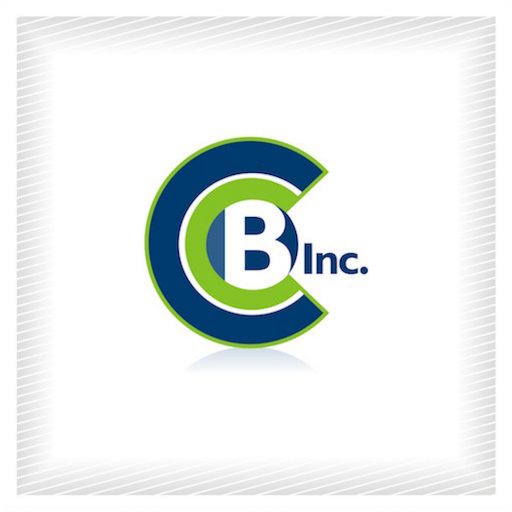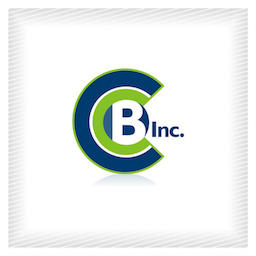Section 1202: Small Business Stock Gain Exclusion

To encourage investment in new ventures, small businesses, and specialized small business investment companies, Section 1202 of The Internal Revenue Code grants relief to investors who risk their funds in these businesses.
Non-corporate investors may exclude up to 50 percent of gain they realize on the disposition of qualified small business stock (“QSBS”) issued after August 10, 1993 and held more than five years.
Section 1202 Stock Capital Gain Exclusion
Acquired before 2/17/09 50%
Acquired 2/17/09 – 9/27/10 75%
Acquired 9/28/10 – 12/31/14 100%
As part of the American Recovery and Reinvestment Tax Act of 2009, the Section 1202 exclusion was raised from 50% to 75% for QSBS acquired after February 17, 2009 and before September 28, 2010. Then in September 2010, the Small Business Jobs Act of 2010 was enacted, further amending Section 1202 to exclude 100% of gain from disposition of QSBS acquired after September 27, 2010 and before January 1, 2015. The newly enacted Tax Increase Prevention Act further extended this 100% exclusion to qualified small business stocks acquired in 2014.
For QSBS purchased after September 27, 2010 and before January 1, 2015, a zero percent effective income tax rate will apply to at least the first $10 million of gain upon its ultimate sale if applicable requirements are met. Excluded gain from these investments will not be treated as a preference item for AMT purposes, so the benefits extend equally to AMT taxpayers.
The amount of gain eligible for the exclusion is subject to per-issuer limits. The exclusion is available to taxpayers who own eligible stock in a qualified corporation (hold the stock for more than five years), and the corporation meets requirements that it actively conducts a qualified trade or business and is under a maximum gross assets test.
The five year holding period requirement can be satisfied no earlier than August 12, 1998, since the exclusion can only apply to stock issued after August 10, 1993.
For gain on its stock to qualify for the exclusion, a corporation must be a C corporation other than a
• Disc
• A regulated investment company
• A real estate investment trust;
• A real estate mortgage investment conduit;
• A financial asset securitization investment trust;
• A cooperative; or
• A corporation electing the Puerto Rico and possessions tax credit.
Stock issued to a taxpayer cannot qualify for the exclusion if the issuing corporation purchases (directly or indirectly) any of its own stock from the taxpayer or persons related to the taxpayer, with the four-year period beginning two years before the issue date. A ‘safe-harbor’ de minimis amount can be redeemed without rendering the stock ineligible for the exclusion. The aggregate amount paid for the stock by the issuing corporation in such redemptions cannot exceed $10,000 or more than 2 percent of the stock held by the taxpayer and all related persons.
Stock will also not qualify for the exclusion if the issuing corporation engages in a ‘significant redemption’. A redemption is significant if the corporation, within a two year period beginning one year before the issuance of the stock, redeems stock with an aggregate value exceeding 5 percent of the aggregate value of all the corporation stock. A de minimis exception applies if either the aggregate amount paid for all stock redeemed during the two year period does not exceed $10,000 or no more than 2 percent of all outstanding stock.
Per-issuer limitation
There is a cumulative limit on the gain from a single issuer that a taxpayer may exclude. Eligible gain from any one corporate issuer in any given tax year is taken into account only to the extent that it does not exceed the greater of,
1. $10 million reduced by the aggregate amount of eligible gain taken into account by the taxpayer in prior years from the same issuer, or
2. 10 times the adjusted basis of all qualified stock of the issuer that the taxpayer disposed of during the tax year. Additions to the basis are disregarded. This limitation can severely restrict the tax benefit of this provision in the event of a truly substantial windfall.
The $10 million limitation is applied on a shareholder-by-shareholder basis and any property contributed to the issuing corporation is its fair market value as of the contribution date.
Married taxpayers filing separately have $5 million of eligible gain for each spouse.
Original issue requirement (Section 1202(c))
Small business stock must be acquired after August 10, 1993 by a taxpayer other than a corporation, at its original issue (directly or through an underwriter), for money, for property other than stock, or as compensation for services other than underwriting. Please note that the exclusion is not limited to a corporation’s initial stock offering, but also applies to any subsequent issuance of stock.
Gain on qualified stock held by a partnership, S corporation, RIC, or common trust is excludable if the entity held it for more than five years and the person to whom the gain passes held an interest in the entity when the entity acquired the stock.
If qualified small business stock is transferred for other stock in a Section 351 incorporation or 368 reorganization transaction, the transferor treats the stock received as qualified small business stock. The holding period of the exchanged stock is tacked to that of the stock received.
If qualified small business stock is transferred by gift, at death, or from a partnership to a partner, the transferee is treated as having acquired the stock in the same manner as the transferor, and as having held the stock during the continuous period.
Qualified Small Business Requirement (Section 1202(d))
For substantially all of the taxpayer’s holding period, the corporation must use at least 80% by value of its assets in the active conduct of a qualified trade or business. This includes assets used in furtherance of a prospective active business (Section 195 and 174 activities). It also includes working capital, investments expected to finance research, and computer software rights that produce active business royalties. However, after the corporation has existed two years, no more than 50 % of the assets can be working capital or investments held for future research.
The active business requirement is waived for specialized small business investment companies (SSBIC). An SSBIC is any corporation licensed by the SBA under Section 301(d) of the Small Business Investment Act.
A qualified trade or business does not include professional service organizations (law, accounting, architecture, etc.), banking, fanning, mining, or hotel and restaurant management. If an issuing corporation owns more than 50 percent of another corporation, its pro rata share of assets and activities is attributed to it.
A corporation is not a qualified trade or business for any period during which more than 10 percent of its assets total value consists of real estate not used in the active conduct of a qualified trade or business. Owning, dealing in, or renting real property does not qualify.
Gross Assets Test
Both before and immediately after the issue date, a qualified small business corporation’s aggregate gross assets cannot exceed $50 million. All members of a parent-subsidiary controlled group are treated as one taxpayer (>50 percent common ownership). Any contributed property is determined as if the basis were equal to the fair market value at the contribution.
Subsequently exceeding the $50 million limit does not disqualify otherwise qualifying stock, but the corporation can never again issue qualified stock.
Recomputation of certain income and deductions based on AGI
In determining whether a net operating loss carryover remains after a net operating loss is carried to another year, the amount excluded on the sale of qualified small business stock in the year the loss is carried to must be added back to taxable income.
The $25,000 exception for passive rental activities phase out with respect to AGI is determined without regard to the small business stock exclusion.
Gain excludable under this provision is not used in computing the taxpayer’s long-term capital gains or losses, and is not investment income for investment interest limitations. If a sale of stock qualifies for the exclusion, the remaining gain is not eligible for the 15 percent long-term capital gain rate. Such gain is treated as “mid-term”‘ taxable at 28 percent. If gain does not qualify for the exclusion, the entire gain may be taxed at 15 percent.
For QSBS dispositions after May 5, 2003 and before September 28, 2010, 7 percent of any gain excluded under Section 1202 is treated as a preference item for Alternative Minimum Tax (“AMT”). No gain excluded for QSBS purchased after September 27, 2010 before January 1, 2015 is subject to AMT.
QSBS Treatment for General Partner
The benefits of Sec. 1202 are passed through to the noncorporate partners of a partnership that recognizes gain on the sale of QSBS, allowing those partners to exclude 50/75/100 percent of their share of the partnership’s gain, if:
• The QSBS qualifies as QSBS in the hands of the partnership;
• The partnership satisfies the five-year holding period described above; and
• The noncorporate partner held its interest in the partnership on the date on which such pass-thru entity acquired such stock and at all times thereafter until the disposition of such stock.
For this purpose, the amount of gain eligible for Sec. 1202 treatment at the partner level cannot exceed the amount of gain that would be allocated to the partner based on the partner’s percentage interest in the partnership at the time the partnership acquired the QSBS. The statutory language is ambiguous in the case of a fund that provides its manager with a carried interest allocation that does not become effective until a specified benchmark has been satisfied. The law does not provide a clear definition for “interest” or whether it applies to a carried interest before or after the benchmark was satisfied at the time the fund acquired the QSBS investment.
California Taxation
California does not conform to the 75 percent and 100 percent exclusions applied for federal tax purpose. California allows exclusion of 50 percent of gain from disposition of QSBS, almost identical to the federal exclusion prior to the federal amendment by American Recovery and Reinvestment Tax Act of 2009 and the Small Business Jobs Act of 2010, but requires:
• At least 80 percent of the corporation’s payroll be attributable employment located within California during substantially all of the holding period and
• At least 80 percent of the corporation’s assets be used in the active conduct of qualified trade or business within California during substantially all of the holding period.
The bill AB 1412 enacted in 2013 eliminates the two-part test above after it was held unconstitutional but retains the requirement that at least 80 percent of the corporation’s payroll be attributable employment located within California at the time of stock issuance to qualify for the 50 percent gain exclusion for QSBS sales made in taxable years beginning after December 31, 2007 and before January 1, 2013.
California also does not conform to the AMT tax preference applied for federal tax purpose. It picks up one half of the gain exclusion, i.e. 25 percent of total gain from disposition of QSBS, as a tax preference item.
Without further legislation, the California 50 percent gain exclusion will not be available for QSBS sales made on or after January 1, 2013.




